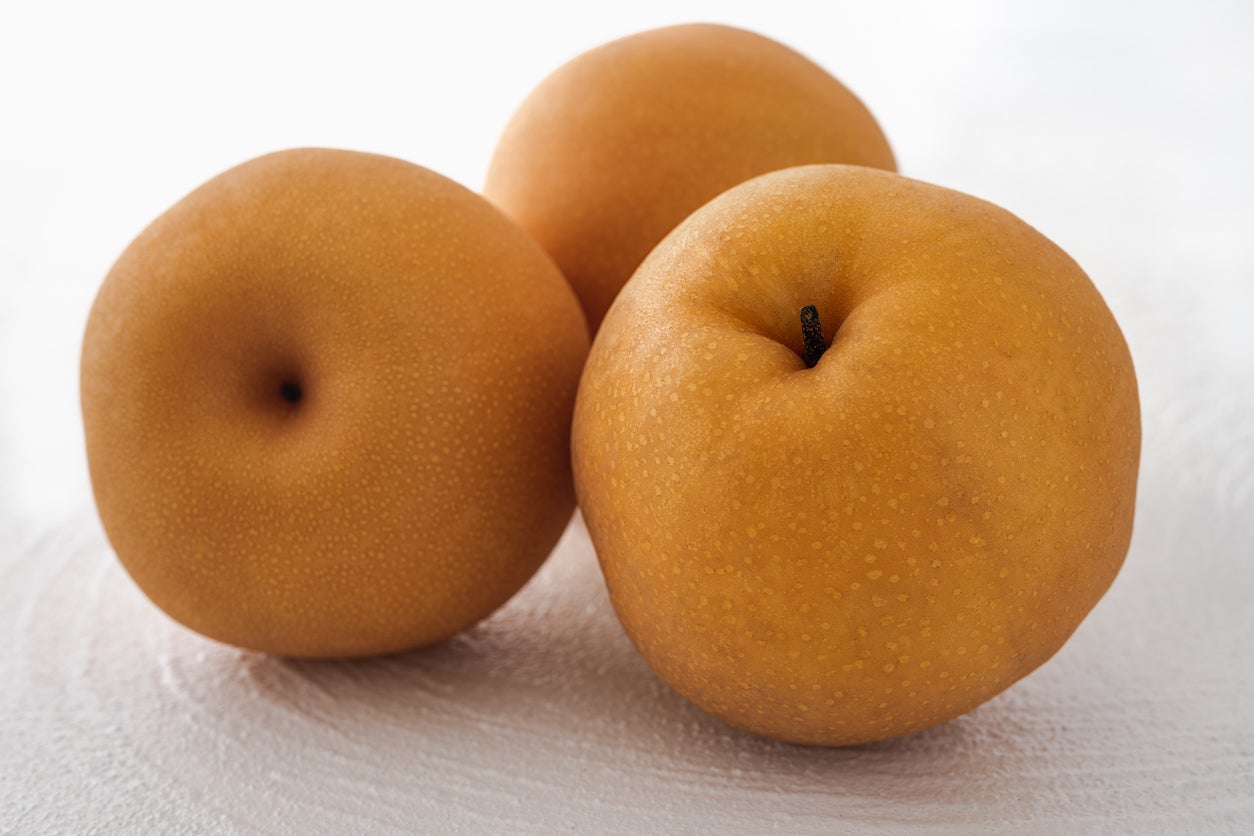Korean Giant Asian Pear Tree – How To Grow Korean Giant Pears


What is a Korean Giant pear? A type of Asian pear, the Korean Giant pear tree produces very large, golden-brown pears about the size of a grapefruit. The golden-brown fruit is firm, crispy, and sweet. Korean Giant pear, native to Korea, is also known as Olympic pear. The trees, which ripen in early October in most climates (about mid-autumn), reach heights of 15 to 20 feet (4.5-7 m.).
Growing Korean Giant pear trees is relatively straightforward, and you’ll have an abundance of juicy pears in about three to five years. Let’s learn how to grow Korean Giant pears.
Growing Asian Pear Korean Giant
Korean Giant Asian pear trees are suitable for growing in USDA plant hardiness zones 6 through 9, although some sources indicate the trees will survive chilly winters as far north as zone 4. Korean Giant Asian pear tree is not self-pollinating and needs another pear tree of a different variety nearby for pollination, preferably within 50 feet (15 m.).
Korean Giant Asian pear trees prefer rich, well-drained soil; however, they are adaptable to nearly any soil, with the exception of heavy clay. Before planting Asian Pear Korean Giant, dig in a generous amount of organic material such as rotted manure, compost, dry grass clippings, or shredded leaves.
Ensure the tree receives full sunlight for at least six hours per day.
Established pear trees need no supplemental irrigation unless the weather is dry. In this case, water the tree deeply, using drip irrigation or a soaker hose, every 10 days to two weeks.
Fertilize Korean Giant pears using a balanced, general-purpose fertilizer when the tree begins bearing fruit. Feed the tree after bud break in spring, but never later than July or mid-summer.
Gardening tips, videos, info and more delivered right to your inbox!
Sign up for the Gardening Know How newsletter today and receive a free copy of our e-book "How to Grow Delicious Tomatoes".
Prune Korean Giant Asian pear trees in late winter, before the buds begin to swell. The trees rarely require thinning.

A Credentialed Garden Writer, Mary H. Dyer was with Gardening Know How in the very beginning, publishing articles as early as 2007.
-
 Looking For Plants To Give You The Soft And Fuzzies? Try These 5 Fuzzy Leaf Plant Options
Looking For Plants To Give You The Soft And Fuzzies? Try These 5 Fuzzy Leaf Plant OptionsLovers of texture, drama, silver foliage and tactile plants will adore these special sensory garden additions. These fuzzy leaf plant options will leave you all aglow
By Susan Albert
-
 Get Ready For A Summer Of Hummers! Grow These Full Sun Hummingbird Plants and Flowers
Get Ready For A Summer Of Hummers! Grow These Full Sun Hummingbird Plants and FlowersIf you’re lucky enough to enjoy a sunny backyard, make sure you are maxing out on your pollinator opportunities and grow these full sun hummingbird plants and flowers
By Tonya Barnett